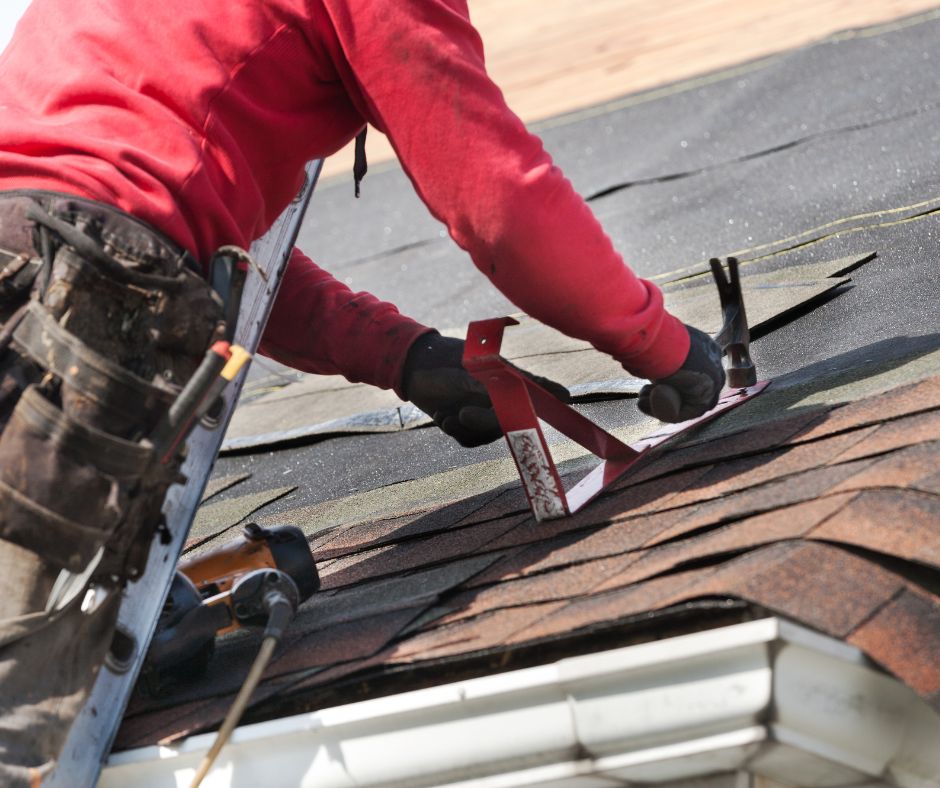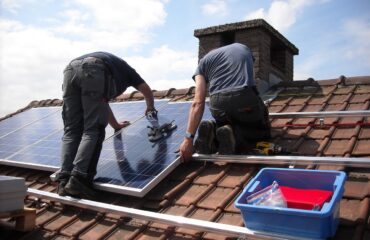Roofing felt, a commonly used material in the construction industry, serves multiple purposes that contribute to a roof’s overall functionality and longevity. From waterproofing and moisture protection to insulation and energy efficiency, roofing felt plays a crucial role in safeguarding the structure against various environmental elements.
With the help of our roofing experts, let’s delve into the world of roofing felt and uncover its many applications and benefits.
Waterproofing and Moisture Protection
Waterproofing and moisture protection are essential functions of roofing felt, ensuring the longevity and durability of a roofing system. Roofing felt, also known as tar paper, acts as a moisture barrier installation, preventing water from seeping into the roof’s underlying structure. This is particularly important in areas with high rainfall or where the roof is exposed to extreme weather conditions.
Roofing felt is commonly used in waterproofing applications such as underlayment for shingle roofs, as it provides an additional layer of protection against water infiltration. The felt is typically installed in overlapping layers, with the seams sealed to create a watertight barrier.
It’s crucial to emphasize that the effective functioning of roofing felt as a moisture barrier is contingent on proper installation. Any gaps or inadequate sealing during installation can compromise its performance.
Ice and Snow Dam Prevention
Ice dams form when snow on the roof melts and subsequently refreezes at the eaves, leading to water backing up under the shingles. This can lead to leaks and water damage inside the building.
Conversely, snow dams result from the accumulated weight of snow on the roof, exerting excessive stress on the structure. Roofing felt acts as a protective layer, providing an extra barrier against moisture infiltration and preventing ice and snow dams from forming. It helps to create a watertight seal, ensuring that water does not penetrate the roof and cause damage to the underlying materials.
By properly installing roofing felt, homeowners can significantly reduce the risk of ice and snow dam formation, thereby protecting their roofs and properties.
Enhanced Roof Durability and Longevity
Roofing felt, alternatively referred to as tar paper or underlayment, provides numerous advantages that contribute to the overall durability of the roof. Firstly, it acts as a waterproofing barrier, preventing water from infiltrating the roof structure and causing damage. It also helps reduce the impact of extreme temperature changes, protecting the roof from expanding and contracting, which can lead to cracks and leaks.
Furthermore, roofing felt adds an additional layer of insulation, enhancing energy efficiency by minimizing heat loss and contributing to the overall comfort of the building.
The installation involves:
- Laying the felt over the roof deck.
- Ensuring proper overlap.
- Securing attachment to prevent wind uplift.
Overall, the inclusion of roofing felt in the installation process greatly enhances the durability and longevity of the roof, providing long-lasting protection against environmental elements.
Insulation and Energy Efficiency
Roofing felt plays a crucial role in enhancing the thermal regulation and energy efficiency of a structure. Here are three key ways in which roofing felt contributes to insulation and energy efficiency:
- Thermal regulation: Roofing felt serves as an extra layer of insulation, aiding in the reduction of heat transfer between the interior and exterior of a building. This insulation property helps to maintain a comfortable temperature inside the building and reduce reliance on heating or cooling systems.
- Energy conservation: By mitigating heat loss or gain, roofing felt contributes to enhanced energy efficiency, potentially resulting in lower energy consumption and reduced utility bills.
- Soundproofing capabilities: Roofing felt also provides soundproofing benefits by absorbing and dampening external noises, creating a quieter indoor environment.
With its insulation and soundproofing capabilities, roofing felt creates a more comfortable and energy-efficient living or working space.
Protection Against Wind and Debris
Roofing felt serves as a vital protective barrier, safeguarding buildings against the damaging effects of strong winds and flying debris. It acts as a wind-resistant layer, preventing wind uplift and potential damage to the roof structure. The felt is designed to withstand high wind speeds and create a barrier that minimizes the risk of wind-driven rain entering the building. By providing an extra layer of protection, roofing felt helps maintain the roof’s integrity and prevents water leakage.
Additionally, roofing felt serves as a shield against debris. It acts as a barrier, preventing small objects such as leaves, twigs, and dust from penetrating the roof. This debris protection is essential in areas prone to storms or where trees are nearby, as it helps prevent clogging of gutters and drainage systems.





